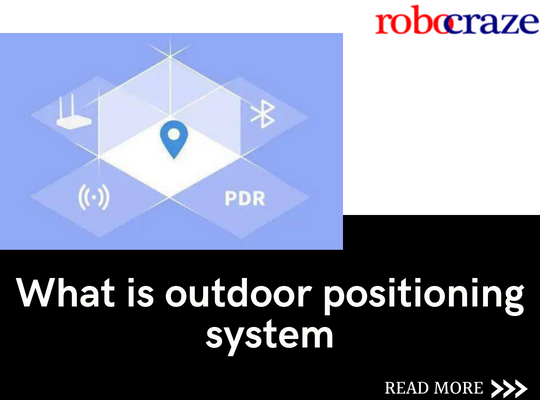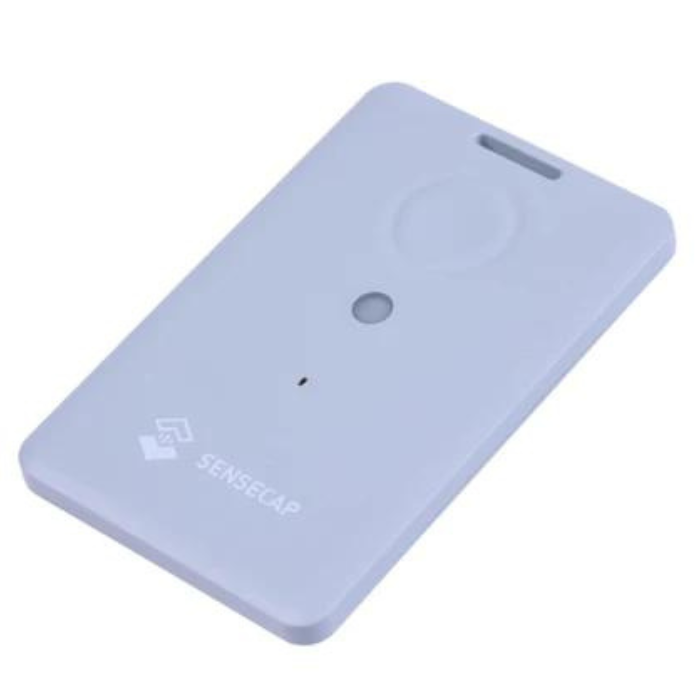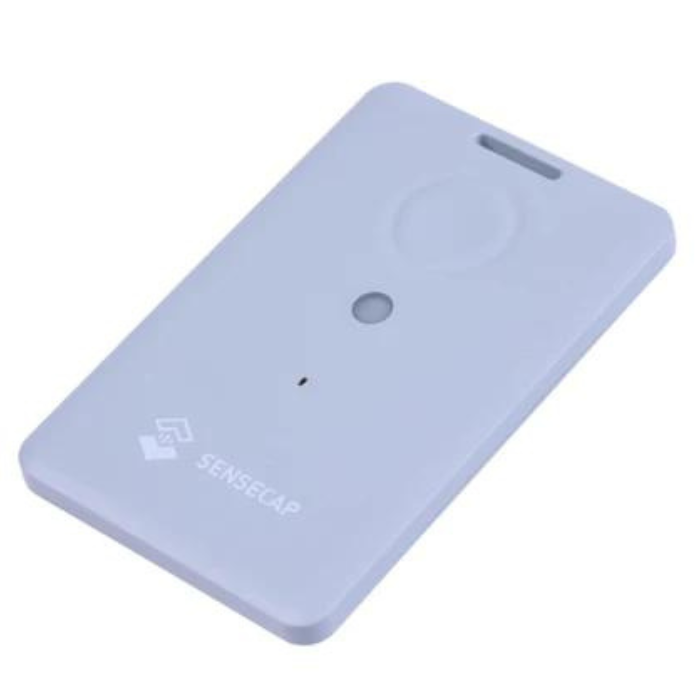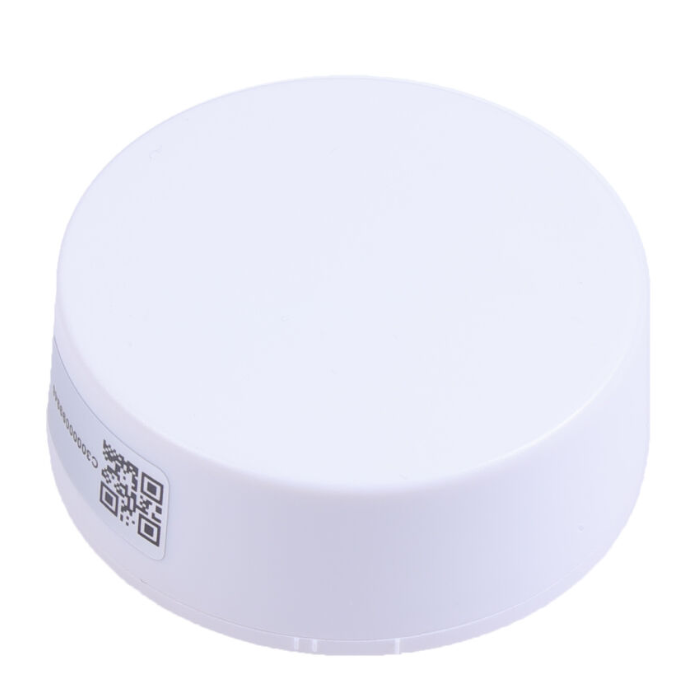Introduction
In today's world, location data has become a game-changer for businesses looking to gain an edge over their competitors.
Outdoor positioning systems, which leverage technologies like GPS, cellular networks, and Wi-Fi, are at the forefront of this location data revolution, offering organizations a wealth of opportunities to enhance customer experiences, streamline operations, and unlock new revenue streams.
What is Outdoor Positioning?
Outdoor positioning refers to a suite of technologies that enable the precise tracking and locating of people, assets, and vehicles in outdoor environments. At its core, outdoor positioning systems use signals from satellites, cell towers, and Wi-Fi hotspots to triangulate a device's position using complex algorithms and trilateration techniques.
These systems have become indispensable tools for navigation, asset tracking, workforce management, and security applications, providing real-time location data with impressive accuracy, often within a few meters.

By continuously monitoring and updating a device's location, outdoor positioning systems can not only pinpoint where something or someone is at a given moment but also track their movements over time, enabling advanced capabilities like route optimization, geofencing, and movement pattern analysis.
The ability to precisely locate and monitor objects and people in the great outdoors has opened up a world of possibilities across industries, from logistics and transportation to security and public safety.
As the demand for location-based services continues to grow, outdoor positioning is poised to play an increasingly pivotal role in shaping the way businesses operate and deliver value to their customers.
The demand for location data is skyrocketing, with the global location-based services market projected to reach a staggering $62.9 billion by 2029, according to a report by Fortune Business Insights.
This explosive growth is being fueled by a multitude of factors, including the proliferation of smartphones and IoT devices, the increasing adoption of location-based technologies across industries, and the growing recognition of the value that location data can provide businesses.
Major companies like Uber, Amazon, and FedEx have already embraced outdoor positioning technologies to optimize their operations and deliver unparalleled customer experiences. Uber's entire business model, for instance, is built around the ability to precisely locate and match riders with nearby drivers in real-time, leveraging a combination of GPS, cellular, and Wi-Fi positioning data.
Amazon, on the other hand, uses outdoor positioning to streamline its logistics and delivery operations, tracking the movement of packages and vehicles from fulfillment centers to customers' doorsteps. This not only allows for more accurate delivery estimates but also enables Amazon to optimize routing and reduce costs associated with inefficient transportation.
For businesses that have yet to leverage this powerful technology, the risk of falling behind is very real. As consumers become increasingly accustomed to location-aware services, ignoring outdoor positioning could mean losing ground to more agile competitors who are able to offer more seamless, personalized, and efficient experiences.
In industries where location data can mean the difference between life and death, such as emergency services and public safety, the adoption of outdoor positioning technologies is not just a competitive advantage – it's an absolute necessity.
From guiding first responders to the precise location of an emergency to tracking the movements of law enforcement personnel in high-risk situations, outdoor positioning systems are playing a critical role in keeping communities safe and secure.
How Outdoor Positioning Systems Work
While the end-user experience might be as simple as opening a navigation app, the technology behind outdoor positioning systems is remarkably complex and sophisticated, incorporating cutting-edge hardware, software, and algorithms to deliver accurate and reliable location data.
At the heart of outdoor positioning systems are three primary technologies: GPS, cellular positioning, and Wi-Fi positioning, each with its own unique strengths and limitations.

GPS (Global Positioning System) is perhaps the most well-known and widely used positioning technology, relying on a network of satellites orbiting the Earth to triangulate a device's position with incredible accuracy, even in remote outdoor locations.
By analyzing the time it takes for signals to travel from multiple satellites to the device's receiver, the GPS system can pinpoint the device's location with an accuracy of typically 5-10 meters. Cellular positioning, on the other hand, uses the signal strength and timing of nearby cell towers to estimate a device's location.
This approach is particularly useful in urban areas with dense network coverage, where GPS signals can be obstructed by tall buildings or other obstacles. Cellular positioning leverages techniques like Time Difference of Arrival (TDOA) and Angle of Arrival (AOA) to triangulate a device's position based on its distance and angle relative to multiple cell towers.
Wi-Fi positioning works similarly, triangulating a device's position based on the signal strengths of nearby Wi-Fi access points. While not as accurate as GPS in outdoor environments, Wi-Fi positioning can be a cost-effective solution for both indoor and outdoor positioning, particularly in areas with a high density of Wi-Fi networks.
To achieve the highest levels of accuracy and reliability, modern outdoor positioning systems often combine data from multiple sources, a process known as sensor fusion or hybrid positioning.
By leveraging advanced algorithms and machine learning techniques, these systems can fuse GPS, cellular, and Wi-Fi data into a cohesive and precise location fix, taking advantage of the strengths of each technology while compensating for their individual weaknesses.
This multi-source approach not only improves overall positioning accuracy but also enhances system robustness, ensuring reliable location data even in challenging environments where one or more positioning technologies may be degraded or unavailable.
The practical applications of outdoor positioning are vast and diverse, with different industries leveraging the technology in unique ways to solve complex challenges and drive operational efficiencies.
In the realm of navigation and fleet management, outdoor positioning is essential for providing turn-by-turn directions, monitoring vehicle movements, and optimizing routes for maximum efficiency.
Companies like Google, TomTom, and Garmin have built entire businesses around delivering accurate and reliable navigation solutions powered by outdoor positioning data. These systems not only help drivers and fleet operators navigate from point A to point B but also enable advanced features like real-time traffic updates, route re-calculations based on current conditions, and predictive maintenance alerts based on vehicle usage patterns and location data.
In the logistics and supply chain realm, outdoor positioning enables real-time asset tracking, allowing businesses to monitor the location and status of shipments, cargo, and equipment with pinpoint accuracy.
This level of visibility is invaluable for ensuring on-time deliveries, managing inventory levels, and reducing the risk of loss or theft. Companies like FedEx and UPS have invested heavily in outdoor positioning technologies to optimize their logistics operations, using location data to route packages more efficiently, track delivery vehicles, and provide customers with accurate delivery estimates.
Outdoor positioning is also a critical component of modern security and safety systems, enabling the precise tracking of personnel in hazardous environments, triggering automated alerts and alarms based on predefined geofences, and ensuring rapid emergency response when needed.
In the oil and gas industry, for example, outdoor positioning systems are used to monitor the movements of workers on remote drilling sites, alerting safety teams if someone enters a restricted area or deviates from established safety protocols.
Similarly, in the mining and construction sectors, outdoor positioning can help track the location of heavy machinery and personnel, reducing the risk of accidents and ensuring timely evacuations in the event of an emergency.
Tips for Implementing Outdoor Positioning
While the benefits of outdoor positioning are undeniable, implementing these systems effectively requires careful planning and consideration of several key factors to ensure successful adoption and maximum value realization.
Choosing the Right Technology Mix
Not all outdoor positioning technologies are created equal, and the optimal solution will depend on the specific use case and requirements of the business. Factors such as the desired level of accuracy, the operational environment (urban vs. rural), and the availability of existing infrastructure (e.g., cellular networks, Wi-Fi hotspots) will all play a role in determining the most suitable positioning technology or combination of technologies.

For example, GPS may be the best choice for tracking assets or vehicles in remote outdoor areas, where its ability to provide highly accurate location data without relying on terrestrial infrastructure is essential.
However, in urban environments with dense network coverage and potential signal obstructions, cellular positioning or a hybrid approach that combines GPS with cellular and Wi-Fi data may be more suitable.
Additionally, businesses should consider building redundancy into their systems by combining multiple positioning technologies, ensuring consistent accuracy and reliability across different scenarios.
This approach not only improves overall system robustness but also enables seamless indoor-outdoor coverage, a critical requirement for many applications that involve tracking assets or personnel as they move between indoor and outdoor environments.
To make an informed decision on the right technology mix, businesses should carefully evaluate their specific requirements, operational environments, and existing infrastructure, and consult with experienced outdoor positioning solutions providers who can guide them through the selection and implementation process.
Securing Your Location Data
As with any sensitive data, safeguarding the privacy and security of location information is paramount, both from a legal and ethical standpoint, as well as to protect the integrity and reputation of the business.
Businesses must navigate a complex landscape of regulations and compliance requirements, such as the General Data Protection Regulation (GDPR) in Europe and the California Consumer Privacy Act (CCPA) in the United States, to ensure they are handling location data responsibly and transparently.

Failure to comply with these regulations can result in significant fines and damage to brand reputation. Implementing robust data governance policies, access controls, and encryption measures is essential to protect against breaches, misuse, and potential legal ramifications.
This may involve implementing strict access controls and user authentication mechanisms, encrypting location data both in transit and at rest, and establishing clear policies and procedures for data retention, sharing, and disposal.
Additionally, businesses should consider privacy-enhancing technologies like differential privacy and anonymization techniques to protect individual privacy while still enabling valuable insights and analysis to be derived from location data.
Partnering with experienced outdoor positioning solutions providers that prioritize data security and privacy can also be invaluable, as they can provide guidance and best practices for implementing robust security measures and ensuring compliance with relevant regulations.
Integration and Scalability Essentials
To truly maximize the value of outdoor positioning, businesses must ensure seamless integration with their existing systems and infrastructure, enabling location data to flow seamlessly across various applications and platforms.
This may involve leveraging APIs and middleware to facilitate data exchange and interoperability with enterprise applications, IoT devices, and other mission-critical systems.

For example, integrating outdoor positioning data with a fleet management system can enable real-time vehicle tracking and route optimization, while integrating with a customer relationship management (CRM) platform can enable location-based marketing and personalized customer experiences.
Additionally, scalability should be a key consideration from the outset, as outdoor positioning deployments can quickly grow in complexity and scope as new use cases and requirements emerge.
Designing systems with future expansion in mind, and embracing modular and cloud-based architectures, can help businesses future-proof their outdoor positioning investments and accommodate growth without significant disruption or technical debt.
Cloud-based outdoor positioning solutions, in particular, offer numerous advantages in terms of scalability, flexibility, and cost-effectiveness. By leveraging the virtually unlimited computing power and storage capacity of cloud platforms, businesses can easily scale their positioning systems up or down as needed, without the constraints of on-premises infrastructure.
Furthermore, cloud-based solutions often provide advanced data management and analytics capabilities, enabling businesses to derive deeper insights from their location data and make more informed decisions based on real-time analysis and reporting.
By prioritizing integration and scalability from the outset, businesses can ensure that their outdoor positioning systems remain agile, adaptable, and capable of supporting evolving business needs and emerging use cases.
Conclusion:
As we navigate an increasingly connected and data-driven world, the importance of location data and outdoor positioning technologies cannot be overstated. From enhancing customer experiences and streamlining operations to unlocking new revenue opportunities and bolstering security, the potential impact of outdoor positioning on businesses is truly transformative.
The ability to precisely locate and track assets, vehicles, and personnel in real-time, combined with the power of advanced analytics and data-driven decision-making, opens up a world of possibilities for businesses across industries.
Whether it's optimizing logistics and supply chain operations, delivering highly personalized and contextual customer experiences, or ensuring the safety and security of employees in high-risk environments, outdoor positioning is a game-changer.
Moreover, as the Internet of Things (IoT) continues to expand, with more and more devices and objects becoming connected and location-aware, the demand for accurate and reliable outdoor positioning data will only increase.
This presents a unique opportunity for businesses to not only leverage existing positioning technologies but also explore and adopt emerging solutions that promise even greater accuracy, scalability, and cost-effectiveness.
Enterprises that embrace outdoor positioning early and implement it strategically will undoubtedly gain a significant competitive advantage, while those that lag behind risk being left in the dust by more agile and forward-thinking competitors. The time to explore outdoor positioning solutions is now.










